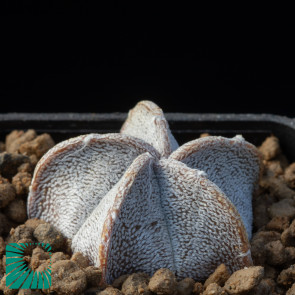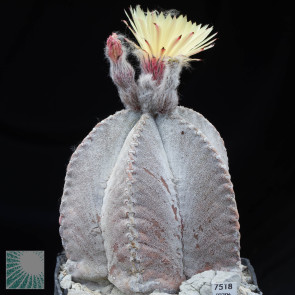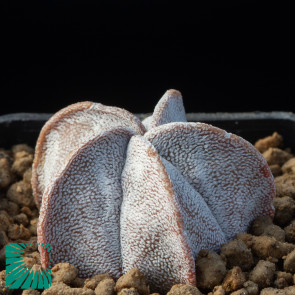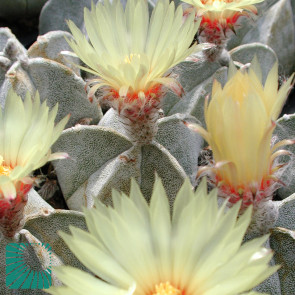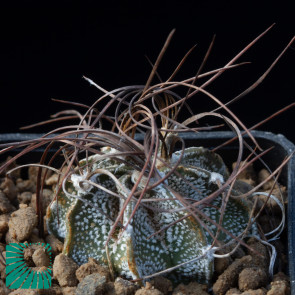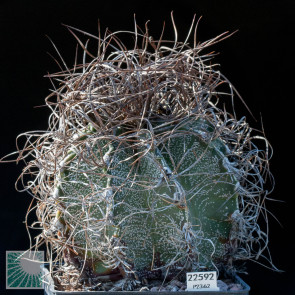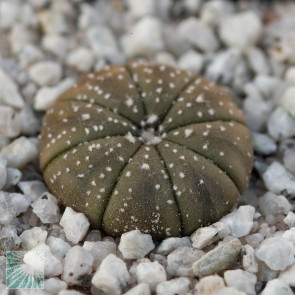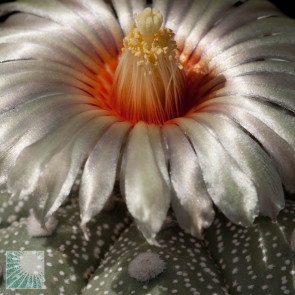Astrophytum
Globular cacti, strongly depressed or columnar, always solitary. Their name comes from 'aster' = star, as many species have the stem divided into five ribs. Their epidermis is typically dotted with small white waxy scales with a reflective function of solar radiation. Almost all species are Mexican.
Robust plants, adaptable and resistant to many adversities, including some resistance to low temperatures.
Some spineless species have the shape and color of the rocks among which they grow, camouflaging among them while others have strong thorns with a defensive function or flexible, long and curled thorns to protect themselves from the sun and blend in with the dry grass.
In summer, the large flowers appear on the top of the stems, single or in numerous groups, generally yellow and sometimes with a red throat followed by a dehiscent thorny berry.
If well cultivated, these cacti develop a leathery epidermis that is not easily attacked by pests and diseases, however they are plants susceptible to root mealybugs infestations.
GROWING MEDIUM Mixture of lapillus and pumice with a small portion of peat (20%). |
|
EXPOSURE Gradual exposure to full sun in conditions of good ventilation |
|
COLD TOLERANCE Freezing winter temperature with night low below 0 °C (32 °F). |
WATERING Water moderately waiting for the soil to dry. |
|
GROWING SEASON A summer cycle with growth from March to September. |
|
NUTRITION Fertilization low in nitrogen with NPK titre similar to 8:16:32. |
-
Astrophytum coahuilense
€2.00 -
Astrophytum coahuilense
Lerdo, Durango, Mexico.
€2.00 -
Astrophytum capricorne var. minus
Saltillo, Coahuila, Mexico.
€3.00 -
Astrophytum asterias
Gonzales, Mexico.
€5.00

